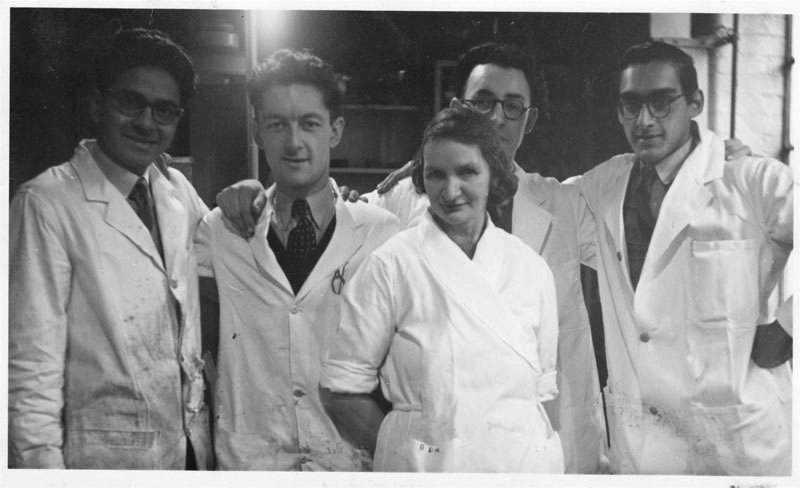Diversity in STEM: Reflections as a Young Scientist
By Nina Orellana, AmeriCorps Watershed Stewards Program Member
I was that kid absolutely fascinated with park interpretive centers and science classrooms. That smell—earthen, musty, rich. The texture of frayed bird nests that I would poke my fingers in, eventually scraping the crusted mud at the bottom. The gaze of taxidermied owls that had seen better days, their feathers rubbed away gradually over time. A freshwater fish tank filled with algae, minnows, and green aquatic plants floating aimlessly around, smelling wonderfully pondy.
Nina (left) in elementary school, already bitten by the science bug.
The science bug had bitten me. I knew this is what I wanted to do. I was fortunate to have more than one dedicated science teacher who instilled a passion for the subject in me. The mentors in my life told me I could do anything. They allowed me access to the resources needed to succeed and financial support was within my reach. It is because of all of these factors that I have managed to succeed so far in science. So many variables had to line up. So many things had to go right.
Starting in the 1960s, it was surmised that diversity in the workforce was beneficial for business’ bottom lines; but the world of science took a bit longer to adjust to the emergent socioeconomic norms of the time. As late as the 1970s, high school girls were discouraged from taking upper math and science courses, as society believed a woman’s place was at home.
This lack of early exposure to science left women at a disadvantage when it came to navigating the world of higher education. Men dominated the disciplines, leaving their female peers exhausted from questioning their own abilities, hiding their insecurities, playing catch-up, and being sincerely lonely. Female scientists often felt the need to hide their femininity and suppress their ambitions. There were few professors or advisors who were female to inspire young women just like them.
While centuries-old residues of patriarchal norms persist to this day, luckily things have improved. There are more support systems and female mentors to look up to than ever before. Women are more often encouraged to chase after their dreams and pursue whatever intellectual curiosities consume their minds.
But with that progress comes new challenges, including how to retain women in these professions and sustain the representation of minorities in positions of power. According to a 2014 study done by the Center for Talent Innovation, women who enter careers in science, technology, or engineering are 45 percent more likely than men to leave those jobs within a year. Only 23 percent of women with STEM degrees (800,000 women) actually work in STEM fields. According to a U.S. Commerce Department report, women with STEM degrees are more likely to work in education or health care than in the fields of STEM.
What are some of the underlying reasons women don’t stay in the STEM fields? Women are paid less than their male counterparts, for one. There is also less flexibility when it comes to family leave and childbearing in the research field, where deadlines can be unforgiving. Women are diminished by lab-coat, hard-hat, and geek workplace cultures that are often exclusionary and promote bias (Athena, 2014). While many women are no longer the only female on their team, they are often still excluded from informal “buddy” networks and lack female role models and sponsors.
Women must not be lumped into a large group as if they act as one. They are not a monolith. Women of color, women with disabilities, and members of the LGBTQ community interact with their surroundings in varying ways, and each individual carries her own unique background along with her. Therefore, to support all women in STEM, the support systems and leadership have to be varied as well. By expanding the backgrounds that our leaders come from, we will be able to reap the benefits that come along with the diversity of thought and experience.
I say all of this: that women continue to be underrepresented in STEM fields, and that more needs to be done. Yet as I look around at my colleagues who are mostly women, I am constantly reminded that we are the minds and hearts that encourage, support, and inspire the youthful faces and eager bodies wanting to serve not only their community, but the earth as well.
Nina (left) with her Grassroots Ecology co-workers Claire (middle) and Becca (right)
Just look at the AmeriCorps Watershed Stewards Program. This is the second AmeriCorps term I’ve served, and both groups have been comprised chiefly of young women with science degrees. Both organizations I’ve worked at have women leaders, executive directors, and scientists on their staffs. I feel inspired and uplifted to continue on this journey, and galvanized to inspire other young women on their own science pathways.
Sources Cited
“Athena Factor 2.0: Accelerating Female Talent in Science, Engineering & Technology.” Talent Innovation, 2014, www.talentinnovation.org/_private/assets/Athena-2-PressRelease-CTI.pdf, https://www.talentinnovation.org/_private/assets/Athena-2-ExecSummFINAL-CTI.pdf.
Eccles, J. S. (2007). Where Are All the Women? Gender Differences in Participation in Physical Science and Engineering. In S. J. Ceci & W. M. Williams (Eds.), Why aren't more women in science?: Top researchers debate the evidence (pp. 199-210). Washington, DC, US: American Psychological Association
Noonan, Ryan. Office of the Chief Economist, Economics and Statistics Administration, U.S. Department of Commerce. (November 13, 2017). Women in STEM: 2017 Update (ESA Issue Brief #06-17). Retrieved from https://www.esa.gov/reports/women-stem-2017-update.
Pollack, Eileen. “Why Are There Still So Few Women In Science?” The New York Times Magazine, 5 Oct. 2013, www.nytimes.com/2013/10/06/magazine/why-are-there-still-so-few-women-in-science.html.



